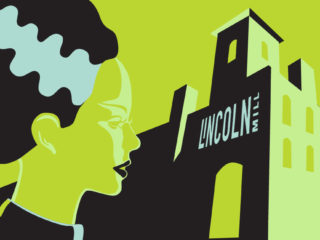
It’s Your Call
Movie Quotes, Naked Bootlegs & Refreshing Accountability
It always grabs my attention when I hear the phrase “It’s your call” used, whether in real life or in a movie or TV show. The fact is, it seems like the phrase is a lot more popular in entertainment than in real life. A quick survey of the QuoDB database reveals that there are over 1,000 references to “It’s Your Call” in movies.
“It’s Your Call” is typically a phrase that’s used at dramatic, decision-making moments with major consequences. When someone says, “It’s Your Call,” you can be sure there is a lot on the line, from planning a casino heist in Ocean’s 11 to space exploration in Gravity. Not surprisingly, a quick survey of the database will reveal that the phrase “It’s Your Call” is used in tense military movies (like Black Hawk Down and Platoon) more frequently than in other genres.
“It’s Your Call” in Sports
Sports are another place with clear roles and obvious lines of authority. Players are accountable for performance on the field, while coaches are in charge of calling plays and making in-game decisions. It’s not uncommon to hear a head coach protecting his players in a post-game press conference by accepting responsibility for an outcome by simply stating, “It was my call.”
When I was a kid, my favorite NFL Quarterback, Joe Theismann, took an important game into his own hands. It happened on 4th and goal against the Falcons.
The head coach called a handoff to the bruising running back, John Riggins, to power in for the score. Instead, Theismann read the defense and faked the handoff (without even telling Riggins), hid the ball on his hip for a fraction of a second, then sprinted into the end zone untouched to seal the victory. That play still lives in infamy not because Washington won the game, but because the quarterback stepped outside his defined role and changed the play.

“It’s Your Call” in the Workplace
Why isn’t it that clear in our work environments? How often do we see problems or weaknesses linger in our organizations without clear ownership or accountability?
Or—the opposite problem—multiple people with unclear roles “working” on a problem by talking in circles and engaging in endless debate with no end in sight and no clear next steps. Sometimes, well-meaning managers can weave into other functional areas in the name of helping or collaboration, only to undermine their fellow leaders and create confusion.
Wait. Isn’t that what our organizational charts are for? Shouldn’t the org chart define clear roles and responsibilities to facilitate ownership and decision-making? After all, we have great titles like Senior Director of Strategy & Corporate Engagement. While the org chart probably started as a useful tool for clarifying how the organization should work, it often seems like it can become more about status, career development, salary and benefit levels, and identifying who’s responsible for conducting annual performance reviews.
An Accountability Chart Helps You Clarify Roles
In his book Traction, Gino Wickman introduces a refreshingly simple tool called the Accountability Chart. A traditional org chart is often developed by creating boxes based on the people already in the organization. The Accountability Chart starts from a completely different and most fundamental place:
What are the critical functional areas necessary to successfully operate and grow your organization?
Hint: There are fewer than you think. In fact, Wickman suggests you start with only 3:
- Sales/Marketing
- Operations
- Finance
From there, you may divide some of these areas into 2 sections, but most organizations should start with closer to 3 areas total, and very few should ever have more than 7. Less is more.
Building an Accountability Chart is starting with a blank sheet of paper, without consideration of how things have been done in the past or what roles people may be in today. It’s an exercise focused on identifying those areas and the primary roles that must be performed within each function. This is a challenging task.
Only after an Accountability Chart is fully built do you consider names. Individuals are evaluated (based on criteria outlined in the book) before they are placed in the box.
There’s a simple rule with Accountability Charts: Every box must have a name in it, and there can never be more than one name in a box.
This approach, along with the supporting material in Traction, creates clear responsibility and accountability within the organization. It facilitates organizational strategy by simplifying the structure, creates obvious paths for problem-solving and goal setting, and clarifies the leadership team for the entire organization.
Here’s an Example
At Active8, it’s been our pleasure to work with our client Gregory Construction, not just on Marketing Strategy, but also by participating in quarterly leadership meetings to facilitate their organizational strategy based on the Traction model. This forward-thinking company is continuously searching for ways to improve how it operates, communicates, and delivers value for its partners and customers.
An important step in this ongoing growth occurred recently when the leadership team tossed their traditional organizational chart in the trash and replaced it with a simplified Accountability Chart. Getting it right required a series of tough meetings, honest evaluation, and eventual role changes, even for the founder of the company.
“We all had to check our egos at the door and make decisions focused on improving how we operate. Our Accountability Chart really brings clarity to how we approach problems and opportunities every single day,” explained Aaron Gregory. “As an extra benefit, having Active8 involved at the organizational strategy level ensures that our Marketing programs will be that much more on point and effective.”
Maybe It’s Time to Build Your Accountability Chart
Joe Theismann described that goal-line play back in 1984 saying, “Nobody knew but me that I was going to try it. I’m glad it worked or I would have been booed out of the stadium.”
Maybe the idea of an Accountability Chart sounds scary, but it’s not. No one should get booed out of the stadium. The Traction model is built on open, honest communication that starts with a leadership team willing to be vulnerable and transparent. The team meets regularly (weekly), sets measurable goals, and supports each other in achieving them.
Accountability is not scary. In a supportive, functional environment, it’s liberating…even refreshing.



